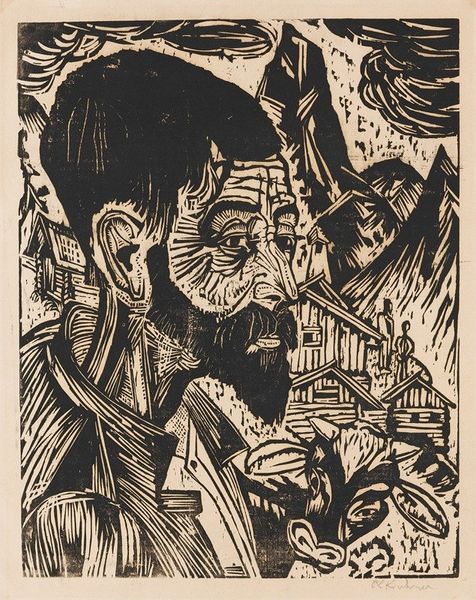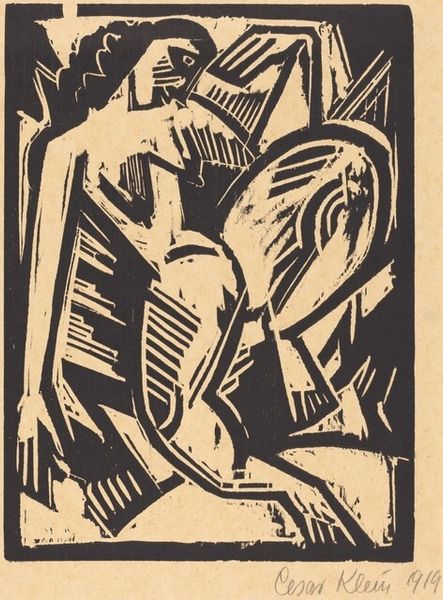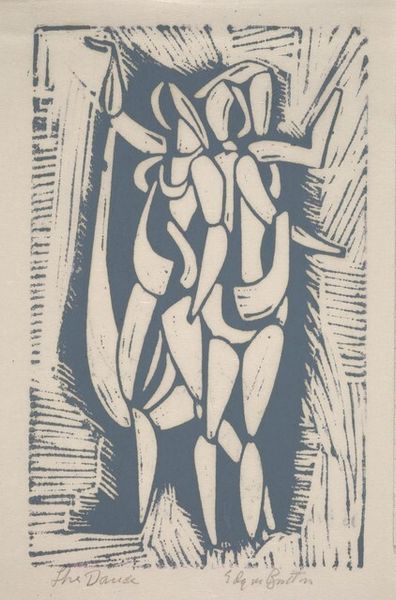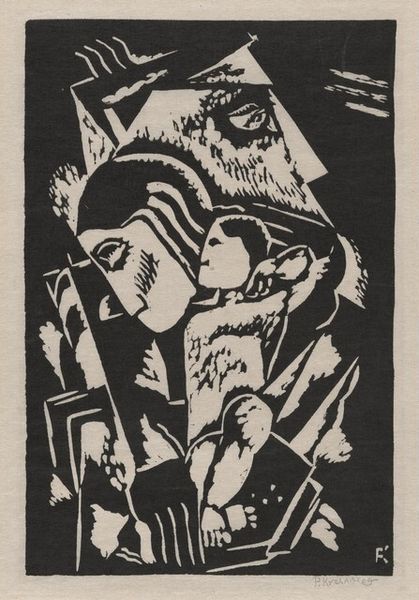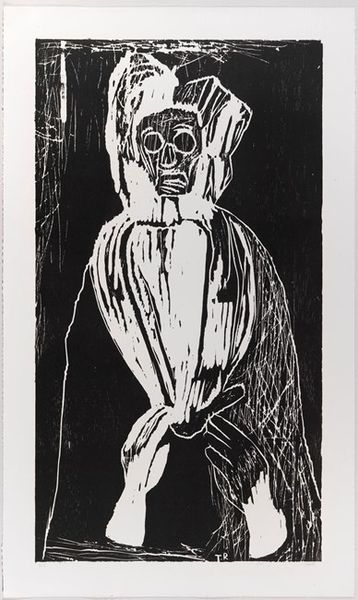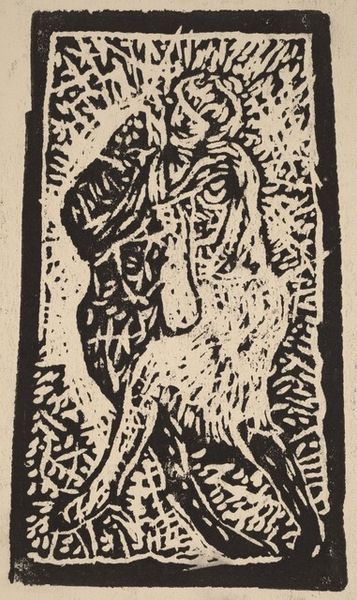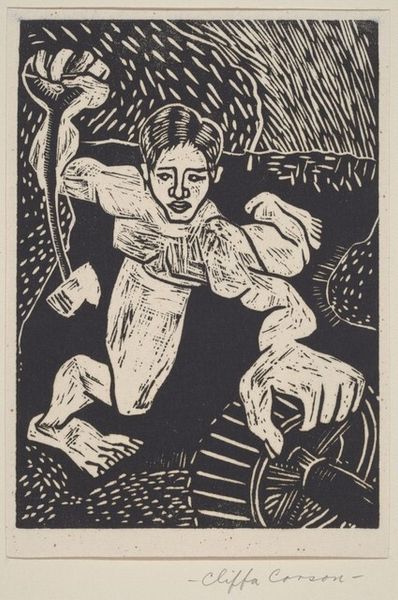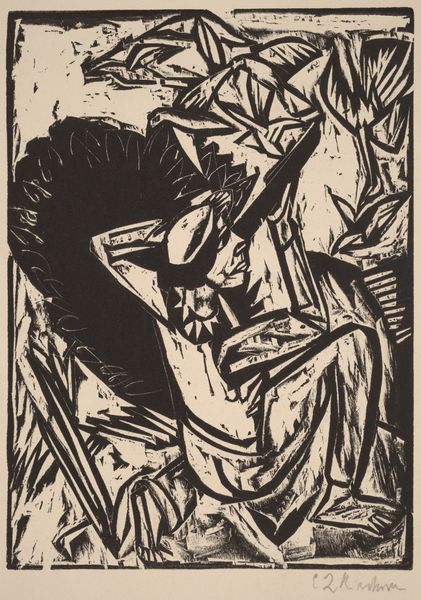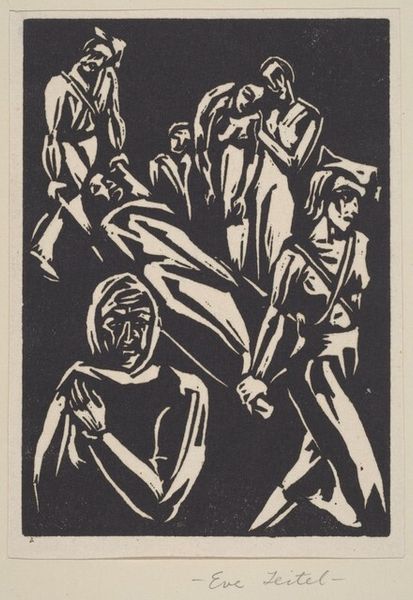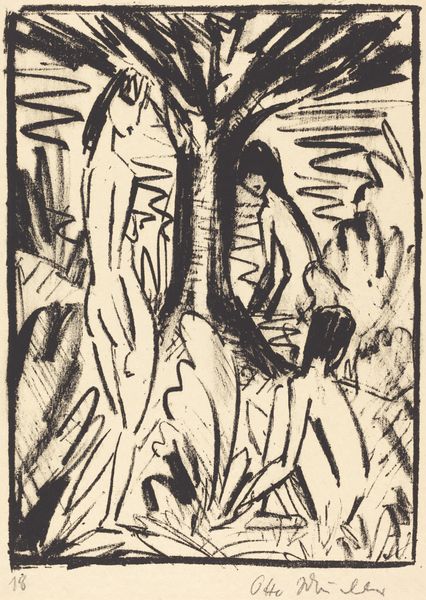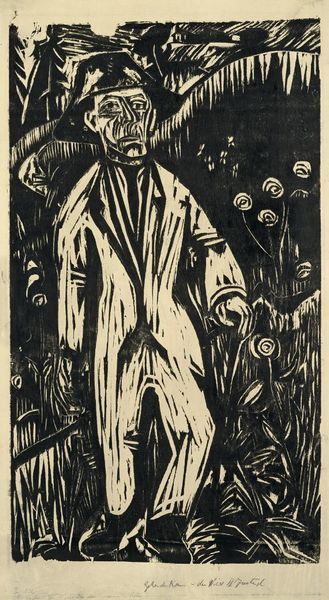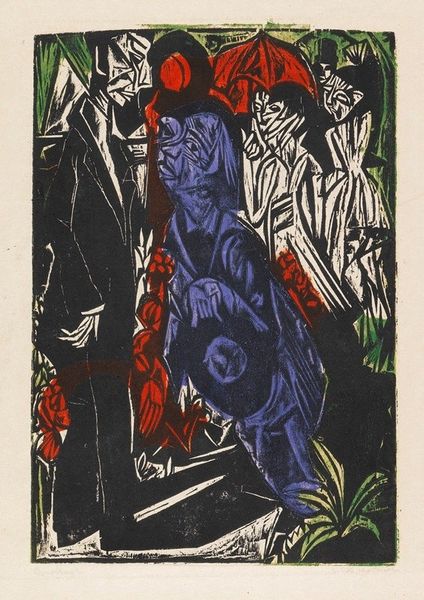
print, woodcut
#
portrait
# print
#
caricature
#
german-expressionism
#
figuration
#
expressionism
#
woodcut
#
history-painting
Copyright: National Gallery of Art: CC0 1.0
Curator: This haunting woodcut is titled "Jungling (Krankes Madchen)," or "Young Boy (Sick Girl)" by Erich Heckel, created in 1913 during the height of German Expressionism. Editor: Wow, it hits you right away, doesn't it? A black and white jaggedness. The eyes… they stare right through you. It feels unsettling, raw somehow. Like peering into a very private, very painful moment. Curator: That rawness is key. The stark black and white contrast, the angularity… it all speaks to the Expressionist desire to convey inner emotional states above all else. Given its creation within the Expressionist movement, particularly within the Die Brücke group, this portrait embodies many sociopolitical concerns regarding health and urbanization at the time. Editor: I can definitely see the 'inner state' coming through. The figure is almost swallowed by these harsh, abstract shapes... Are they trapped? Constricted by something we can't see? The negative space almost feels like it's attacking them. Curator: Precisely. Heckel and the Expressionists were grappling with rapid societal changes, the alienating effects of urban life. Illness, both physical and psychological, was a recurring theme—an exploration of the individual's vulnerability within the larger system. We need to remember that it was a transitional point of scientific advance when we now saw microscopic underlays, which was deeply connected to ideas about exposure and vulnerability that this artwork showcases so well. Editor: It's kind of interesting how this sickness or exposure almost gives an interiority to the figure, because what do we call that space or figure to define them at this point in time? What name or form should we prescribe here in terms of a solid understanding of health when illness makes it so fluid? That almost becomes an expressionist tactic, huh? This breaking or almost grotesque vision allows space to view a form of subjectivity, a perspective to stand from as viewer in some kind of dialogue with the seen figure. Curator: It definitely demands this position. Looking closer we can examine some feminist theory relating to this subject, allowing an emphasis of gender's cultural role and effects, because how can it be that the artist is unclear in their gender ascription here. How do socialized perceptions come to define our ability to assess gender and identity through a perspective, from inside and out. It offers a reflection on our social perceptions surrounding individual identity. Editor: Yes it creates that dialogue that keeps circling back. After all that social deconstruction... there's also something profoundly human and strangely intimate here, wouldn’t you say? That stark gaze really grabs you into a deeper perception... or question. Curator: Ultimately, this work is a very challenging invitation to reflect on illness, vulnerability, and societal pressures that linger from over a century ago. Editor: Leaving you with this sort of lingering feeling of humanity at its core too, doesn't it? Well said.
Comments
No comments
Be the first to comment and join the conversation on the ultimate creative platform.
